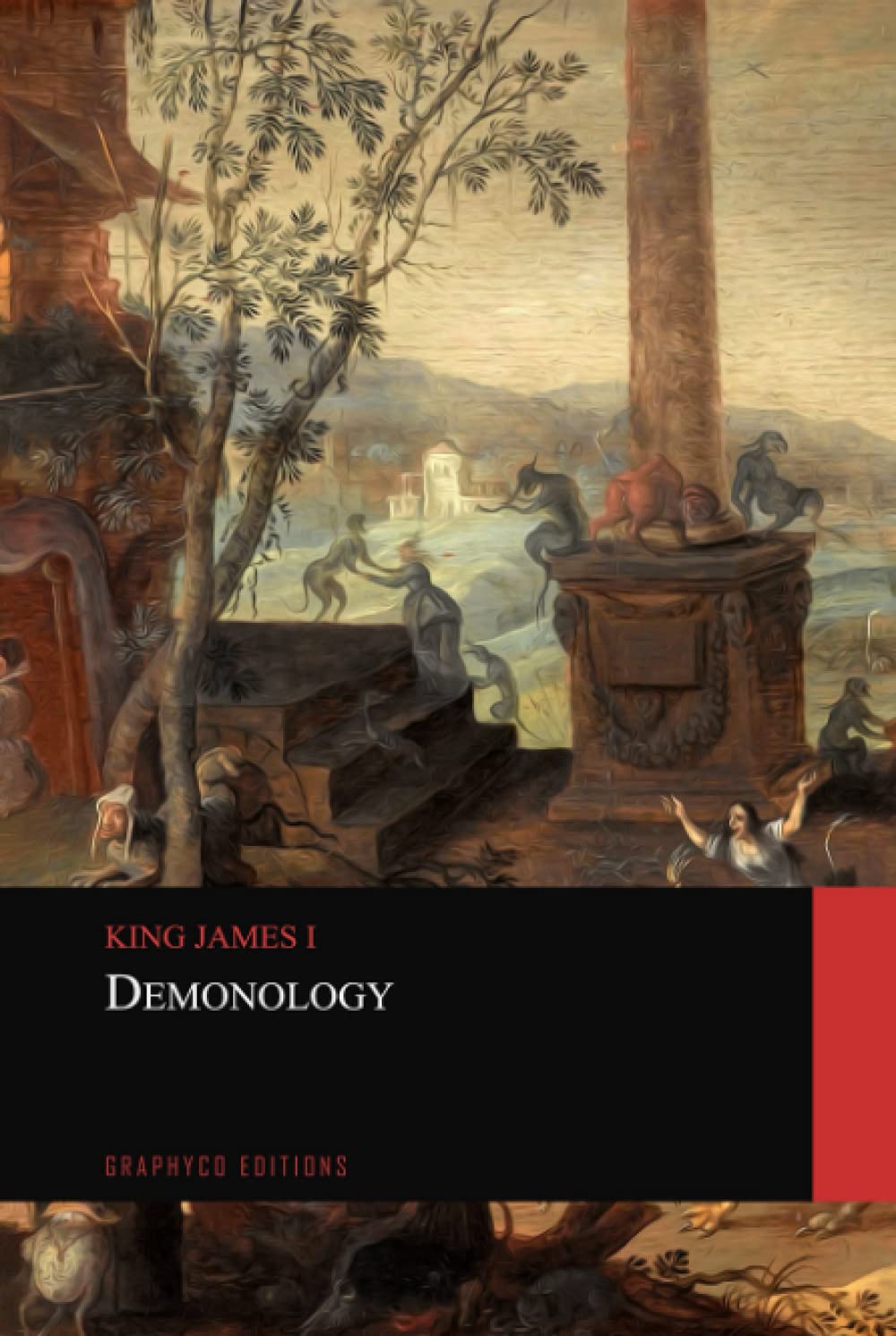Deliver to Portugal
IFor best experience Get the App



Demonology
M**B
Interesting historical document, appalling introduction
"Demonology" was written by King James I of England (formerly King James VI of Scotland) to defend his belief in the power of witches (and thereby justify their torture and execution). It's valuable as a historical record of a particular time and mindset, and could have benefitted from an introduction written by someone with knowledge of the historical context. What it has is an introduction written by someone who needs to re-take high school world history. Never mind that he doesn't know what Old English actually was (hint: "Demonology" is not written in it); he also confuses Mary Stuart (mother of King James) with Mary Tudor, referring to her as "Bloody Mary." (He also apparently thinks that Mary Stuart was the Queen of England.) Buy the book, but if you're new to the study of this period, don't believe anything written in the introduction.
M**K
Difficult Read, but Rather Interesting
This printing of the King James "Demonology" consists of four main parts: Demonology Books 1-3, and News From Scotland. The entire book is written on old-english. It takes geting used to the old spelling of nearly every word, but once you figure out what is being said, the book is rather interesting.Demonology Books 1-3 are in a conversation format between two individuals: Philomathes and Epistemon. In these three books, Epistemon answers Philomathes questions regarding his odd and rather strict views on Magic, Sorcery, Witches, Demons, and mainly Satan. It's interesting to learn how people in the 1500's thought back then--many things in entertainment, educational, and medical fields which we see today that we consider normal were considered the work of the Devil back when this book was originally written. Epistemon comes accross and single-mindedly arrogant, but interesting, nonetheless.The final part of the book the News from Scotland which is about how a handful of women and a doctor were tried, tortured, and some executed for the belief and fear that these individuals were witches--which, back then, anyone who did anything out of the norm was considered a witch (all witches were considered the Devil's deciples during that time).The first three books tells us what they thought of Satan, witches, ghosts, and demons during the 1500's and the last part shows us an example of what they did when they thought someone was a witch and how far they went to rid themselves of these individuals. This is a very interesting, educational, however very difficult read as it is in old english--spelling was rather different to how we spell things today. Once you get used to the spelling (which you may never do--some words are spelled so far off as to what we spell them now; and some words have multiple spellings--which makes it even more difficult to figure out). A very good, but rather difficult read.
J**S
An Insight into Tudor Theology
To anyone intetested in social or theological history, I recommend highly this work
T**™
A long ago purchase
I bought this a long time ago. I don't know what I was thinking. The book sucks. Religious propaganda. If you're interested or just fascinated by the dark side this book is written by religious fanatic. I personally do not believe that beings, entities, creatures, demons or what ever they might be are evil just because they are from the dark. We are all equal. All know good and are all capable of evil. Religion is brainwashing.
O**G
Brief discussion
First and foremost, on this particular Amazon page, the name listed as the author should be King James the First. If the name is any different, then the name is incorrect. This is the same man who had the Holy Bible translated into English and was King of England. This is a book written by a very famous Christian and who we refer to when we refer to the King James Bible.This book is what historians call first source material. Such a book will generally be read only by scholars. But, it need be, not confined to scholars. Such a book can open our eyes to a different culture and we can learn from it.I should think it was written in Shakespeare's English and is technically modern English once removed from what we speak today. Old English or Anglo Saxon was spoken between 500 AD and 1200 AD.One other thing. This book, rather than showing how everyone in the 16th and 17th centuries believed in witchcraft, shows that many people in that time did not believe in witchcraft. King James I says so in the book itself when he says many people today doubt the existence of witches. Why would King James I of England, who we know best when we think of the King James Version of the Holy Bible, write a book trying to convince people that witches exist if everyone already believed witches exist?I am not suggesting anyone read this.
E**D
It wasn't what I expected👎🏿👎🏿
Not really estoteric enough for me
M**N
...And to think we trust HIS VERSION OF THE BIBLE!
His "Version" of the Bible is no better.
Trustpilot
5 days ago
2 weeks ago